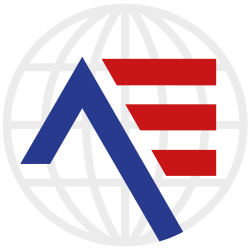In last week’s blog, we discussed the invention of the sewing machine as well as the conflicts and patent wars which raged between the numerous inventors. One of the controversial topics we didn’t cover was how strongly many people at the time opposed the entire concept of automating the sewing process. Individuals and groups who worked in the textile industry spoke out against them, believing that machines like this would lead to the mass unemployment of seamstresses and tailors.

A couple of examples of this opposition come from the stories of inventors we mentioned in last week’s post:
Threats and fire – Barthelemy Thimonnier, 1830
Thimonnier was a French tailor who invented one of the first functioning sewing machines during the French Revolution. He built 80 machines using this design and put them to use in a factory in Paris producing uniforms for the French army. So far so good, but this is where the problems started for Thimonnier. The sewing machine caused a great deal of conflict with tailors of the city, who believed that this new sewing machine would destroy their livelihood. They formed a mob, destroyed all of his machines, and burned down his factory while he was still inside. Luckily, he managed to escape and he and his family fled the city.
This is how people reacted to the world’s first machine-based clothing manufacturing factory. Thimonnier nearly died for his invention, all because people were afraid of what a progressive machine like this might mean for their own traditional way of doing things.
A hidden invention – Walter Hunt, 1833
Hunt was an American mechanic who invented what is considered by many to be the first lockstitch sewing machine. It is widely believed that Hunt deliberately didn’t patent his sewing machine as he thought such an invention would result in seamstresses being unable to find work.
Hunt held true to his beliefs and left his invention hidden rather than risking being responsible for mass unemployment.

Did the sewing machine cause unemployment as people feared it would?
Many people were very vocal in their opposition of the sewing machine. The worries about job losses were widely spread and others believed that automating the hand stitching process would result in the loss of traditional sewing skills. However, the invention of the sewing machine actually led to better working conditions and liberation for many women. Before sewing machines made affordable factory-produced clothing available, many women spent hours tediously hand sewing within their homes. Mending work and domestic clothing production was incredibly slow by hand.
Sarah Hale, the American journalist and campaigner for women (1822-79) wrote that to make the average shirt by hand required 20,620 stitches. At a rate of 35 stitches a minute, a competent seamstress would complete a shirt in 10-14 hours, for which they would be ill paid if trying to produce them for a living. With a sewing machine which could sew 3000 stitches a minute, a seamstress could create a shirt in an hour with much neater seams. They were still not well paid, but they could produce the work much more easily.
Rather than causing unemployment, as people such as Hunt had feared, the invention of the sewing machine made jobs for seamstresses more accessible for women who had previously been stuck at home. A large garment-making industry emerged, which moved clothing production from the home to workshops and factories. This allowed them to earn a wage for themselves or supplement their household income with extra funds. With sewing machines making clothing production much quicker and easier, clothing became more affordable and available to people from lower-income households.
Was the initial controversy unfounded?
The impact of the sewing machine wasn’t all positive. With machines speeding up production, people expected clothing prices to keep going down. Factory owners often exploited their workers to keep costs down, forcing them to work long hours of overtime for low pay, and particularly taking advantage of women and children for cheap labour. It was even standard practice to charge women for the use of the machines within their factories. Although this was a long time ago and things have improved, sweatshops are still in existence today in the UK and abroad. However, this is not a fault with automation and sewing machines themselves and more to do with companies still trying to maximise profits and produce clothing as cheaply as possible.

The future of automation
Automation has always been controversial. New advancements can appear to threaten jobs and have the potential to change industries beyond recognition. Historically, however, technological advancements have often proven to have had a positive impact on working conditions. Embracing automation is vital if companies are looking to invest in the future. Some areas may change, but other jobs are created when repetitive tasks are no longer required to be done by hand!
We are proud to work on exciting new developments in the world of industrial sewing and cutting machines which help to increase the level of automation in manufacturing across many industries! To find out more about how new technology can improve your workplace, you can contact our team via info@ae-sewingmachines.co.uk
For more information about automation in industry, our previous posts can be found here:
https://www.ae-sewingmachines.co.uk/blog/automation-and-the-jobs-market/
https://www.ae-sewingmachines.co.uk/blog/automation/










